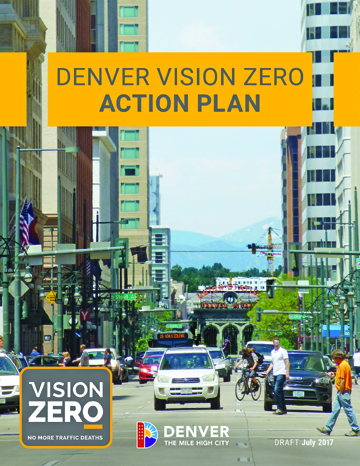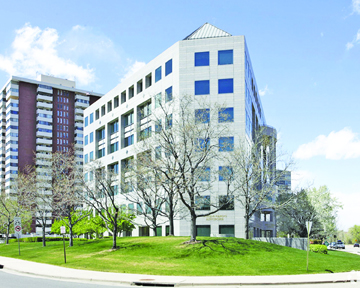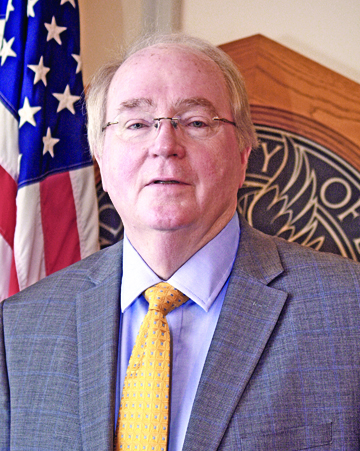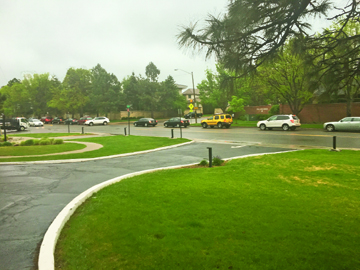Prominent Neighborhoods Fuming Over Public Works’ Vision Zero Plan Affluent, Angry Homeowners Say Public Works Is A Divisive Bureaucratic Power And The Plan Should Be Scrapped

by Glen Richardson
Denver Public Works is once again under public scrutiny. This time the department responsible for the design and construction of city streets is in the crosshairs of community activists in three of Denver’s most prominent neighborhoods — Polo Club, Belcaro and Wash Park.
Already making headlines for the Colorado Convention Center scandal plus the City Auditor hinting of improper bidding (May Chronicle), residents in these mega-mansion neighborhoods of curvy, tree-lined streets say the department’s ill-conceived Vision Zero Plan was prepared without sufficient review by the parties most affected by it, the homeowners and workers in the immediate neighborhoods. Moreover they believe the proposal will “totally destroy the residential character, visual pleasantness and smooth traffic flow that currently exists.”
It is with implementation of the proposed plan, where it would narrow traffic lanes at Steele St. and Alameda Ave. along this pricey corridor that homeowners say would significantly impact traffic into and out of the Polo Club and Belcaro neighborhoods.
Traffic from Colorado Blvd. on the east and University Blvd. on the west traverse through these neighborhoods daily via Alameda, Steele St. and Cherry Creek South Dr. Additionally the plan would add a bike lane along Alameda Ave. and reshape some parking from parallel to angle back-in only parking. The result, neighborhood groups say, would be disastrous traffic backups in both directions.
Area Buildings Curse

Furthermore the ingress and egress to vehicles at the Citadel Office Building — a 370-suite building with 310 subterranean parking spaces at 3200 E. Cherry Creek South Dr. and at the Polo Club Condominiums — a 21-story, 146-unit building with 300 underground parking spaces at 3131 E. Alameda Ave. would be significantly hindered.
Delayed entrance and exit from those buildings would not only further delay traffic but substantially increase the likelihood of vehicle and pedestrian accidents. The plan would also restrict or block the Citadel Office Building’s loading dock located on Steele St. while also restricting turns and reducing the number and configuration of business parking spaces along Steele.
“It saddens me that no one from Denver reached out to the stakeholders who were most adversely impacted by this proposed project for their input,” says 20-year Polo Club resident Carol Anderson. She should know since she worked alongside the transportation planners at the city, county, state and federal levels on transportation projects for the past two decades. “This was not how Denver used to be. And the irony is that Denver’s website touts their transparency in governing when that is not at all what happened on the Steele Street Multimodal Safety project,” she adds.
New Arranges Meeting

Residents at the Polo Club Condominiums first learned of the plan in late April and contacted City Councilman Wayne New. New — who has tangled with Denver Public Works over construction management in Cherry Creek North — arranged a meeting for the condo owners with Public Work’s Sam Piper and Ashley Grace on May 8. More than 100 residents attended along with homeowner neighbors in the area. Besides feedback from the audience. the pair was presented with a petition containing 150 signatures asking that the project be stopped. Reportedly the project was presented to the Miller Park Neighborhood Assn. two years ago and they fought the plan and thought the project had died.
“It was quickly apparent that the statistics presented were not for this intersection and they were not able to prove any justification. The one accident they were able to cite was caused by a sun angle and would not be affected by their proposed changes,” Condominium Board Member Sue Stock told the Chronicle.
Condo resident Scott Lancelot is even more adamant, “The biased presentation of information suggests, at worst, that DPW is engaging in a deliberate lie, or at best, misrepresented and mischaracterized facts, evaded or omitted important information and drew fallacious conclusions in order to get the results they wanted.”
Bikeway Dispute

The focus of their plan Lancelot explains is to eliminate pedestrian-biker fatalities city-wide in the next 10 years. They propose to accomplish this with improvements and investments in High Injury Network (HIN) corridors, build out the pedestrian network and enhance the bikeway network. But he points out that while bike traffic increased by 81% from 2008-2012, the crash rate decreased by 34%. Nearly half (114) were caused by failure of bikers to stop or yield at a sign. Another 34% occurred while riding in a crosswalk or sidewalk.
Their own study, Lancelot continues, identified the top crash intersections and corridors as North Broadway, North and South Federal and West Colfax. A total of 510 crashes occurred along these 22 miles of roads.
His point: At no time was the Alameda Ave. corridor identified as a HIN or High Injury Network!
Modest Modifications

Lancelot, along with his neighbors living along the Alameda-Steele St. corridor, says that if the city wants to improve conditions it can be done with much less expensive modifications which would benefit both pedestrians and bikers without restricting vehicular traffic and making it unnecessary to narrow lanes
Their suggestions are to leave lanes on Alameda and Steele as is. Paint vivid crossing walks on Steele and Alameda (there are currently none). In place of or in addition to the flashing pedestrian crossings on Alameda, install push signals similar to the one at Cherry Creek South which alerts drivers to yield to pedestrians and bikers. A four-way stop sign would not be beneficial at the intersection since it would impact ingress and egress at the Citadel and Polo Club Condo buildings. Should speed become an issue, Alameda could have audible tire grooves cut about 100-ft. from the intersection to warn drivers .
Do not change parking styles or directions on Steele because it would create more traffic congestion. Furthermore, residents say bike lanes are not necessary if the street width is maintained. Restricting turns from Steele onto Alameda is not necessary. “It would be a hindrance not an enhancement to smoothing vehicular traffic.” Finally, homeowners and those that travel through the neighborhood say a stoplight could be installed on Alameda between University and Steele to regularly stop traffic at peak hours to allow pedestrian and cars to cross or enter Alameda, similar to the light at 8th and High Street in Cheesman Park.
